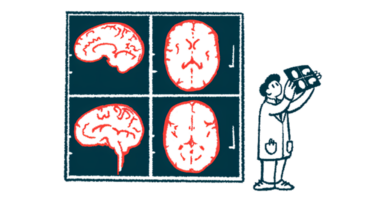Sanofi launches Phase 3 frexalimab trials after positive Phase 2 data
2 new trials recruiting over 2,000 RRMS, SPMS patients at US sites

Bolstered by Phase 2 trial data showing that frexalimab safely reduces the number of brain lesions in people with relapsing forms of multiple sclerosis (MS), developer Sanofi has launched a pair of Phase 3 studies that will test the investigational therapy in relapsing and progressive MS.
One of the newly launched Phase 3 trials (NCT06141473) will involve up to 1,400 adults, ages 18-55, with relapsing forms of MS — specifically, relapsing-remitting MS and active secondary progressive MS (SPMS). The other trial (NCT06141486) is seeking 858 adults, ages 18-60, with non-active SPMS. Both are actively recruiting at sites in the U.S.
These studies will build upon the promising data that resulted from a proof-of-concept Phase 2 trial (NCT04879628) that initially were presented at an annual meeting last summer. A Sanofi-sponsored study that details those findings, titled “Inhibition of CD40L with Frexalimab in Multiple Sclerosis,” has now been published in The New England Journal of Medicine.
“These published Phase 2 results for frexalimab represent important data in not only the potential treatment of MS but to the broader MS community,” Patrick Vermersch, MD, PhD, professor of neurology at the University of Lille, France, and the study’s first author, said in a company press release.
Vermersch said frexalimab was seen to be effective at both doses tested, but particularly the high dose, “where 96% of patients were free of new active lesions after 24 weeks [or nearly six months] of treatment.”
No new lesions seen for 96% of patients 6 months after frexalimab
The experimental therapy is designed to block CD40L, a protein involved in the CD40/CD40L costimulatory pathway that participates in the activation of multiple components of the immune system. This pathway has been implicated in the inflammation that characterizes MS and other autoimmune diseases.
Decades ago, scientists aimed to develop therapeutic antibodies that could block CD40L. However, their development was terminated early when some patients experienced serious blood clots, called thromboembolic events.
Frexalimab is a second-generation CD40L antibody that aims to have the same potential benefits as its predecessors, but is engineered to have a lower risk of thromboembolic events.
Sanofi now is developing the antibody for various autoimmune conditions. The company believes it has potential to address both acute and chronic inflammation in MS without causing widespread immune cell depletion.
The Phase 2 trial, conducted across sites in North America and Europe, enrolled 129 adults, ages 18-55, with RRMS or active SPMS. Initially, participants were randomly assigned to receive one of two doses of frexalimab or a matched placebo for about three months.
In one frexalimab group, patients received a high-dose treatment (1,200 mg) via intravenous or into-the-vein infusions once every four weeks after an 1,800 mg loading dose. The other group received a low dose (300 mg) via subcutaneous or under-the-skin injections once every two weeks, with a 600 mg loading dose. For every four patients assigned to each frexalimab group, one received a matching placebo.
After three months, participants on the placebo switched to the corresponding frexalimab regimen in the study’s ongoing open-label phase, in which both researchers and patients know the treatment being given.
As initially reported, frexalimab was associated with significant reductions in new inflammatory brain lesions between weeks eight and 12 compared with the placebo. Specifically, researchers found an 89% relative reduction at the high dose and a 79% reduction with the low dose — meeting the trial’s main goal. After 12 weeks, or about three months, 85% of patients in the high dose group and 84% in the low dose group had no inflammatory lesions, compared with 50% of those on a placebo.
Secondary goals also were met with both doses of frexalimab. These included reductions in the number of new or enlarging lesions compared with the placebo and in the total number of inflammatory lesions.
These effects were sustained in the extension period, in which 97% of patients opted to participate. Over about six months of treatment, the numbers of lesions remained low in patients who stayed on frexalimab, and declined in those who switched to the active treatment. At the higher dose, 96% of patients were entirely free of new active lesions after about six months of treatment.
Exploratory analyses after 12 weeks indicated that the antibody also was associated with improvements in physical life quality. Reductions also were seen in neurofilament light chain, a biomarker of nerve damage, and CXCL13, a marker of inflammation.
The most common side effects among frexalimab-treated patients were mild to moderate COVID-19 and headache. No thromboembolic events were reported.
“Frexalimab had a generally favorable effect,” the researchers wrote. “Larger and longer trials are needed to determine the long-term efficacy and safety of frexalimab.”
Phase 3 trials testing if therapy can reduce MS relapses, progression
In an editorial accompanying the study, Stephen L. Hauser, MD, an MS specialist who works at the University of California San Francisco, said further study of the therapy is essential, noting that “the results appear clear, although the clinical significance is uncertain.”
To confirm frexalimab’s benefits, it now will be studied in more lengthy Phase 3 trials that will include larger patient populations. This will enable researchers to examine its effects on relapses, a clinical endpoint that requires longer follow-up times for a difference to be observed.
“If these benefits are confirmed with longer-term use of the agent, it seems likely that there will be a protective effect of frexalimab therapy with regard to relapses of multiple sclerosis,” Hauser wrote.
In the Phase 3 trial in people with relapsing forms of MS, researchers will determine whether frexalimab can reduce the annual rate of relapses relative to the approved oral therapy Aubagio (teriflunomide).
If these benefits are confirmed with longer-term use of the agent, it seems likely that there will be a protective effect of frexalimab therapy with regard to relapses of multiple sclerosis.
However, despite frexalimab’s promise in relapsing MS, Hauser noted that existing high-efficacy therapies “create a high bar for any new treatment.”
“Although the current trial was neither designed nor powered to assess benefits against progressive multiple sclerosis, progression is where the true clinical value of frexalimab, and its place in the therapeutic armamentarium against multiple sclerosis, will need to be defined,” Hauser said.
That’s the goal of the other Phase 3 trial, in which investigators will assess whether frexalimab can delay confirmed disability progression among non-active SPMS patients compared with a placebo.
Participants will be followed for nearly four years. Disability progression in this trial will be determined as an increase in Expanded Disability Status Scale (EDSS) scores, or a 20% worsening in dexterity or walking ability scores, that’s sustained for at least six months.








